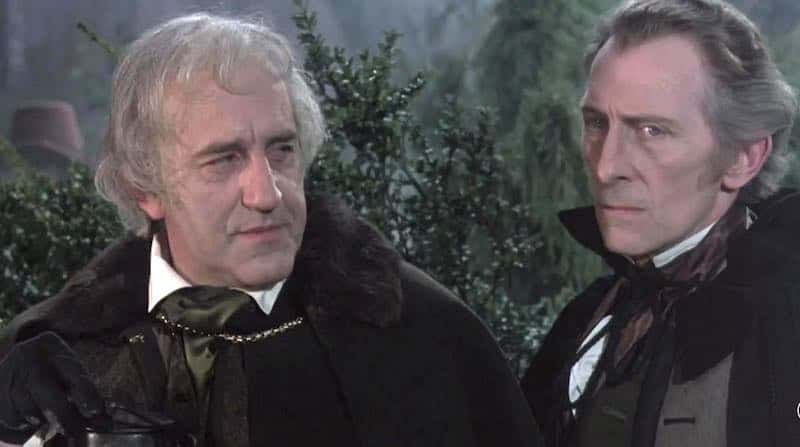The Vampire Lovers came to me through an invitation from a Mastodon friend to participate in a Hammer and Amicus Blogathon. Hammer Films produced a lot of Gothic and horror films in England. Amicus was a similar production company. The Vampire Lovers is part of the Karnstein trilogy about lesbian vampires. Lesbian topics were considered daring in 1970 when the film was released. My goodness, a lot has changed in 53 years. And a lot has stayed the same. For instance, who can resist lesbian vampires? Not me.

The Vampire Lovers is set in 1794 Styria. We learn in a spooky voiceover how Mircalla Karnstein (Ingrid Pitt), a member of the infamous Karnstein vampiric family, was set free from her grave to roam the countryside looking for fresh young women to bleed.

Mircalla can seduce anybody with just a glance. Her mother, The Countess (Dawn Addams), invents excuses to drop her off at the homes of beautiful young women. They take her in without question. She proceeds to have her fun with the beautiful young ladies.

This was 1970, so certain things were true. Women wore filmy see through nightgowns for much of the action and bared their breasts often. Men such as those played by Peter Cushing and Douglas Wilmer, above, were the heroes. Vampires could only be stopped by brave men and Christian crosses. (And garlic.) Women were helpless to defend themselves.

The daring lesbian aspect of the film included a few quick pecks between the women. One woman Mircalla targeted was Emma (Madeline Smith). Emma got the pecks, but her butler Renton (Harvey Hall) was the recipient of the real lusty kissing. Mircalla was a lesbian, but all she needed was the love of a good man to fix her right up.
This classic bit of horror was directed by Roy Ward Baker. The sets looked like painted cardboard but there was plenty of mist and fog to obscure things. The sound track was screaming violins and clanging bells. The plot was short on logic, convincingly acted, and rich in vampire lore. There were many, many screaming terrified women. In short, it was a cult hit waiting to happen.
I said at the beginning that a lot has changed in 53 years. Watching a film like this reminds you where we came from. It’s also a reminder that there are still plenty of men who think women are evil, need to be controlled, and need to obey the Christian men who want to do that controlling.
The other two films in the trilogy, which I didn’t watch for this blogathon, are Lust for a Vampire (1971) and Twins of Evil (1971). All three of the films are streaming on various sites. I watched The Vampire Lovers on FreeVee. Between Hammer and Amicus there are many more cult horror hits like this one. You can find more information on weegiemidget’s blogathon site.

Today is the first day of the event, with participating blog posts shared by weegiemidget and Cinematic Catharsis. Check out those links, because you get to see lots of lurid posters like this one.

Leave a Reply